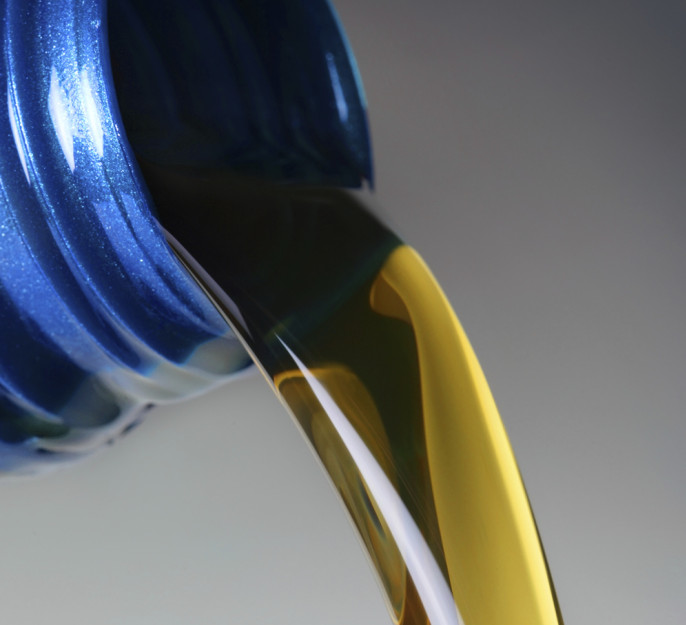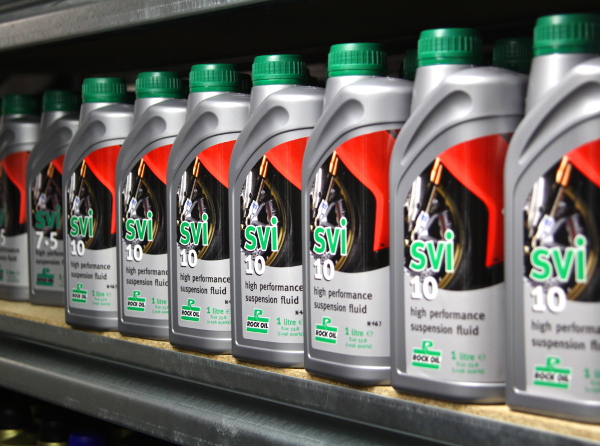A Motorcycle Oil Guide
All you need to know about the lifeblood of your machine
John Newman
Like oxygen and water, oil, a fuel on which the world runs, is an integral part of life; something we almost take for granted will be there. It's the most important component in any internal combustion engine, but in motorcycle engines that work harder and faster than most, it is the lifeblood.
The extraction, refining, manufacturing and specification of oil is a complex business and, for many of us, shrouded in biological and engineering mystery. So here's a brief Wemoto guide to 'the black stuff':
Why do we use it?
The moving internal parts of an engine run on a film of oil; there is, or should not be, any metal to metal contact. So primarily, oil acts as a lubricant.
It also acts as a coolant. For example, on some sports bikes, oil is sprayed on the underside of the pistons to help the cooling process. It helps to cool the transmission (gearbox) too. Piston rings don't seal perfectly and this allows tiny damaging carbon particles to escape into the engine, where they are held in the oil until the filter can grab them.
Other damaging build ups of tar, waxes and other gunk occur, so oil has added solvents to help dissolve this stuff and keep the engine clean.
Where does it come from?
What we find and pump to the surface comes from Earth's biomass: single cell plant life and dead microscopic beings that have sunk to the bottom of oceans, and after a couple of hundred million years under pressure, it becomes what we call crude oil.
It then has to be refined to remove all the unwanted 'dirty' elements to create motor oil, petroleum, and the myriad by-products that derive from today's sophisticated processes.
Oil and how it's graded
The most common word associated with
engine oil is 'viscosity'. It refers to the thickness of oil and the resistance it offers to motion.
Viscosity is measured using an SAE rating; the lower the SAE rating number, the easier the flow at low temperatures. So an SAE10 rated oil will be suitable for very cold conditions or short journeys, where the engine stays relatively cool. Therefore, a rating of SAE 40/50 denotes a thicker grade for hot conditions and where the engine will be running at much higher temperatures.
Modern multigrade oils contain additives and detergents that are efficient at gathering particles and gunk and depositing them in the filter. They have SAE ratings across a range, so an SAE 10-40 multigrade will adapt and protect an engine across a wide temperature range. Multigrade oils are not always suitable for classic or vintage machines. Owners of these bikes tend to choose a suitable single grade SAE product.
What about synthetic oil?
Oil refining and manufacture is a complex chemical process, and the question of whether to use the higher grade technology and expensive synthetic oil is a decision individual motorcyclists tend to make.
Unless a manufacturer specifies using a synthetic oil, most bikes will perform and be protected adequately by the use of multigrade oils. However, highly tuned engines and owners of top end sports bikes, such as the Yamaha R1 or Kawasaki ZX10, may feel the additional expense of using synthetic oils is justified, as it gives better protection to highly stressed components.
The use and expense of using improved protection synthetic oils can also be justified if oil changes and maintenance is extended. For example, if a long high-mileage tour is being undertaken.
Checking and changing oil
Modern water-cooled engines should not burn much oil between changes, but air-cooled engines, when running hot, use more oil to keep cool. Check oil frequently, whatever bike you ride.
Keep the bike upright and rest the dipstick on the top thread to check the level. If you have to top up, don't overfill as this can damage the seals.
Change oil at intervals recommended by the manufacturer. Drain the old oil while the engine is hot as this will help get rid of all the particles. Your handbook specifications will list the amount of new oil to refill.
The filter can be replaced at alternate oil changes, but some riders prefer to do this with every change.
Two-stroke motorcycles
The oil used in these engines is burnt in the combustion chamber and is called a 'total loss' system. Specialist
two-stroke oils are readily available.
Don't forget that two-stroke motorcycle gearboxes will need separate and different oils.
We hope you found our guide useful. If you have something you'd like to add to the guide, or if you'd like to see a similar guide about another topic, let us know at
[email protected].


